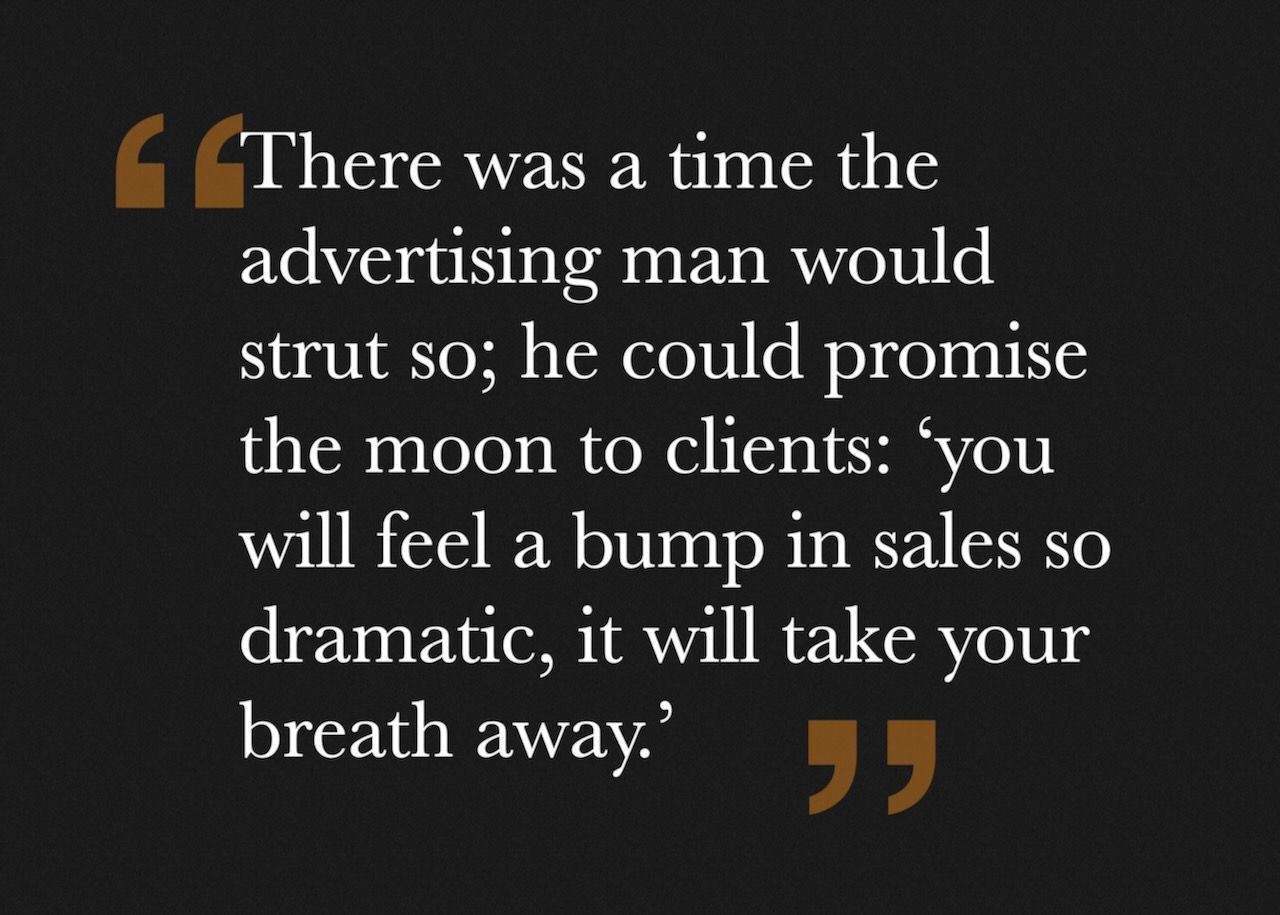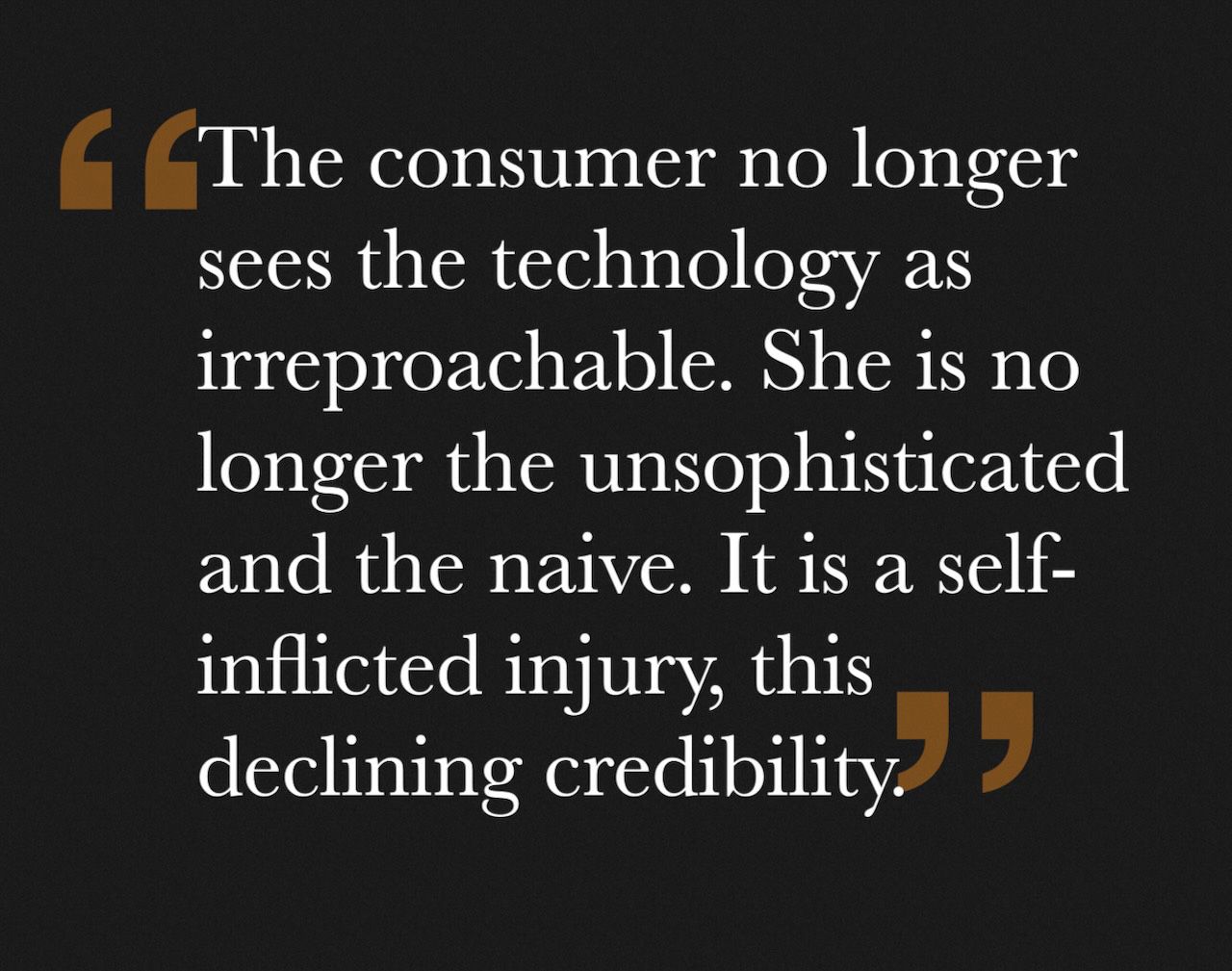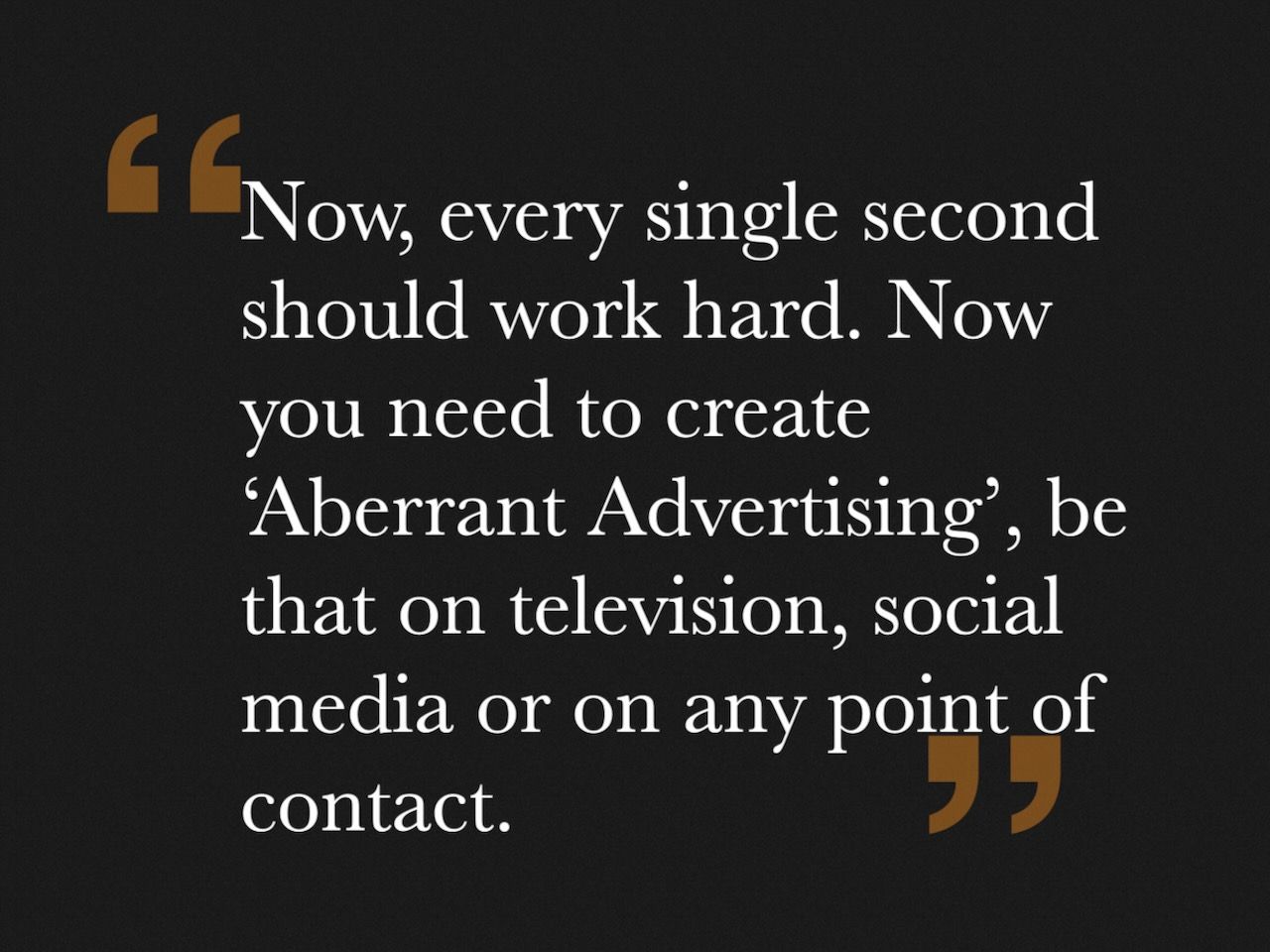
by Vincent R. Pozon
Oh, there was a time the advertising man would strut so; he could promise the moon to clients: “you will feel a bump in sales so acute, it will take your breath away. The shape in your sales chart will be unlike anything you’ve ever seen before.” And he could deliver the moon. The wand with which he would create the magic was advertising, of course, and its most powerful charm was television.
I call this the legitimization effect of the medium. And we know this too well; we have heard it exclaimed, “Oh, that product is good — I saw that on television.” When a product is graduated to television, it blossoms not just in awareness but in perception.
While still able to reshape sales charts dramatically and please advertising clients, television today has lost the ability to guarantee the bump. It used to be that if you were on television for the first time, the only thing you needed to think about was the quality of that bump.

There are many causes behind the weakening of the wand that is television. One major factor is the Comprehension Filter: the consumer is already busy consuming content on other points of contact. Of the thirty seconds allowed you, she will look your way — actually glance at the television set — for maybe ten seconds. The set is no longer the primary source of content because she has her phone, another screen, in her hand.
Adding to the comprehension problem is a Credibility Filter.
She no longer sees the technology as irreproachable. She is no longer the unsophisticated and the naive; what she sees of what you show is no longer swallowed lock, stock and barrel.
It is a self-inflicted injury, this declining credibility, and advertising created the problem.
Almost a century of hyperboles and exaggerations, of immoderate and sweeping product claims; of “whiter than white”, “stronger than steel”, instant cures in seconds. On air today is a hair product that promises to heal damaged hair after one use or in seconds (I forget which tired incantation is utilized).
I remember this quote from a laundry woman in the province when she was asked in a P&G survey what she thought of our ad. She sneered, “huu, prupaganda ra man na (that is just propaganda).

In production, we normally remove warts, wrinkles, noticeable skin blemishes. We smoothen the faces of commercial talents with computer graphics because, firstly, during the few precious seconds they are on camera, we want them to look their best, which they may not be at the time of the shoot, and, secondly, because defects are attention vampires. When we’re selling, say, a candidate, we will lessen the eyebags caused by heavy campaigning, smoothen the bad skin on a celebrity endorser having hormonal problems.
Now this is acceptable.
But if the advertising is about facial products — moisturizers, cleansers, whiteners, astringents, and so on, then computer graphics, thickly applied, is very like lying. And that is what you have on television today. A plethora of the prettified brought to a level that is already noticeable to the untrained eye.
The consumer is jaded because we have abused the technology and impaired its credibility.
Sam Peckinpah used slow motion in “The Wild Bunch”, and there was a point to it. Today globules of water float in mid air, practically frozen, when talents wash their faces in soap commercials. You have never seen globules in your life; this is slow motion brought to the point of unreal and irrelevant.
The little that the consumer sees of what we do, (the filter of too little time) is now seen with a jaundiced eye (the filter of doubt).

Here is the viewer, jaded and bombarded, forever multi-tasking, consuming content from other screens, glancing at our expensive television commercial but once in a while, half listening to it, and if it’s not gripping enough, well, her finger is on the remote control.
Now, more than ever, every single second should work hard and in-your-face. Now, more than ever, you need to create 'Aberrant Advertising', be that on television, social media or on any point of contact.
Previously published in the Manila Times
After a year of college, Koyang entered advertising, and there he stayed for half a century, in various agencies, multinational and local. He is known for aberrant strategic successes (e.g., Clusivol’s ‘Bawal Magkasakit’, Promil’s ‘The Gifted Child’, RiteMED’s ‘May RiteMED ba nito?”). He is chairman of Estima, an ad agency dedicated to helping local industrialists, causes and candidates. He is co-founder and counselor for advertising, public relations, and crisis management of Caucus, Inc., a multi-discipline consultancy firm. He can be reached through vpozon@me.com.
If you liked what you just read and want more of Our Brew, subscribe to get notified. Just enter your email below.


Related Posts
What We Get Wrong About This Strange Thing We Call Advertising
Jul 02, 2025
The Party as a Person: The Story of ‘Pag Mahal Mo, Akbayan Mo’
May 16, 2025
Frequently-Asked Questions About Advertising – Part VII
Apr 11, 2025